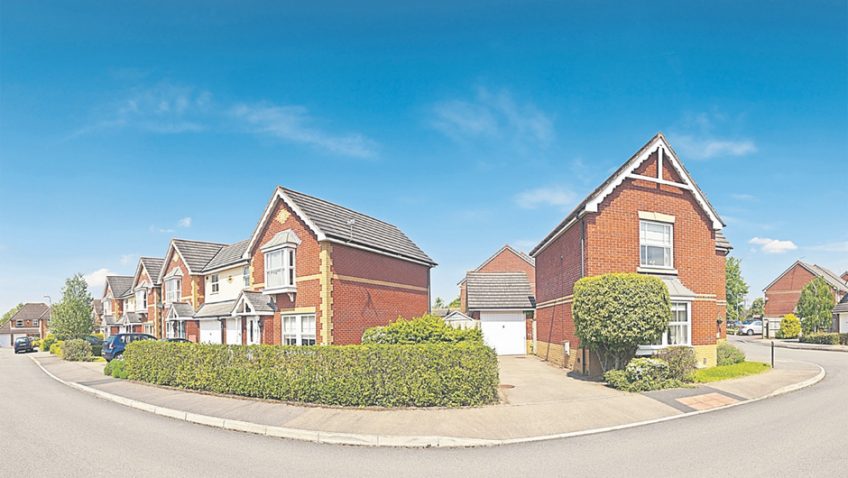Christine Parkinson takes a look at housing policy
If you go to the UK Govt website and search for housing policy you will read that:
“The government is helping local councils and developers work with local communities to plan and build better places to live for everyone. This includes building affordable housing, improving the quality of rented housing, helping more people to buy a home, and providing housing support for vulnerable people.”
Despite this positive statement, successive governments have failed to ensure housing supply matches demand. The shortage of housing has been thrown into the spotlight thanks to the combination of a recent price boom and stagnant real wages. There is also an increasing need for homes with the additional demand generated by rising life expectancy, immigration and the growing number of one-person households.
The recent tragedy at Grenfell tower in London has highlighted once again the appalling state of the UK housing sector from the shortage of suitable accommodation, to the high price of rents in many areas, making it prohibitive for ordinary working families and those on low fixed incomes, such as many retirees, to live in appropriate property.
Social housing: Affordable v social rents
Since local authorities stopped building homes in large numbers, non-profit making housing associations are mainly responsible for building new social housing. They do so principally using central government subsidies together with private finance.
With a reduced capital subsidy from the government, housing associations were encouraged to build properties with rent levels at up to 80% of market rents instead of social rents (which are typically half the market rate).
Concerns about the impact of welfare reform since nearly three-quarters of affordable rent tenants receive housing benefit to help them pay, has made the building of these homes less attractive.
Shelter, the housing charity, has the core belief that everyone should have a safe, secure and affordable home. They comment, “Security is about having a long-term tenancy so you can plan ahead for more than a few months, and feeling able to raise issues without the threat of eviction. It’s knowing there’s appropriate, reliable support there for you and your family if you lose your home.”
“Affordable is about making sure enough homes are built, so everyone in our society can buy or rent a home and still have something left to live on. It’s also about the prices of homes to buy, and private and social homes to rent are in touch with what people earn. They should leave no one behind”.
After a generation of failing to build the homes we need, the housing shortage is affecting everyone from first-time buyers to social tenants. The only long-term solution to the shortage is to build more affordable homes.”
Local councils are instructed by government that the calculation for affordable rents is a reduction of 20% of market rental value. Talking to charities such as Shelter and The Joseph Rowntree Foundation, I learned that they consider that the calculation should be based on a percentage of earnings rather than value of the property: 30 to 35% being a reasonable figure.
According to research done by Channel 4, affordable housing has reduced by almost half over the last ten years.
National Housing Federation
I also spoke with National Housing Federation who are the trade body for housing associations and the voice of affordable housing in England. Matthew Solesbury, their PR Officer said:
“Affordable rent is a reduced rental cost with prices no more than 80% of the market value. Social rent is based on a formula of average incomes and average property values in an area. The broader concept of ‘affordable housing’ includes both of these rental offers but also low-cost buying products such as shared ownership and Help to Buy, which are typically for first-time buyers.
Housing associations are key providers of affordable housing but have a shared ambition to deliver even more.
We have done a great deal of research to get the bigger picture of the need for more affordable housing, which also shows the increasing opinion among the general public that more homes should be built.”
Planning reform
To help boost housing supply, widespread changes to planning policy in the 2012 National Planning Policy Framework (NPPF) was introduced.
The NPPF introduced the “presumption in favour of sustainable development”, which can make refusing planning consent more difficult for local planning authorities without up-to-date local plan housing policies.
New permitted development rights were added to allow the conversion of a variety of buildings, such as offices, former agricultural and industrial buildings, into homes without the need for planning permission.
Concerns remain, however, that there has been no noticeable rise in planning approvals for the most needed types of housing.
Rural Housing
Many rural communities are struggling to survive with existing homes being used as second or holiday homes, leaving locals unable to afford to buy or rent. Seaside towns such as St Ives in Cornwall have tried to stop developments being sold as second homes. Residents of the town have stemmed the tide of second homes-building in a referendum to ban construction.
The plans mean new housing projects will get planning permission only if reserved for full-time residents. More than 80% of voters backed the ban.
I was approached by the parish clerk of Studland in Dorset after she discovered that 44% of property in that village are not main residences and her council are desperate to find ways of providing homes for locals. These facts seem almost obscene in the light of the housing shortage.
Putting People first
The lack of suitable housing throughout the country from urban high rises to rural cottages, underlies many of our modern society’s problems and obviously the answers are not straightforward: however, they must be addressed. Even those of us who are currently adequately housed must have some concern for children and grandchildren who will struggle to find homes in the areas they wish to settle. Now is the time to ask the questions of our local council and ultimately the Government.
There needs to be cross party government support for solutions to the housing crisis and a commitment to build social housing affordable relative to income. Government needs to recognise that the market cannot provide solutions to the social housing crisis as it is not viable for developers.





